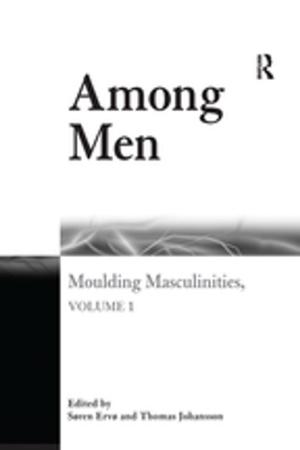Geography and Social Justice in the Classroom
Nonfiction, Reference & Language, Education & Teaching, Educational Theory, Curricula, Teaching, Teaching Methods| Author: | ISBN: | 9781136196515 | |
| Publisher: | Taylor and Francis | Publication: | May 2, 2013 |
| Imprint: | Routledge | Language: | English |
| Author: | |
| ISBN: | 9781136196515 |
| Publisher: | Taylor and Francis |
| Publication: | May 2, 2013 |
| Imprint: | Routledge |
| Language: | English |
The rise of critical discourses in the discipline of geography has opened up new avenues for social justice. Geography and Social Justice in the Classroom brings together contemporary research in geography and fresh thinking about geography’s place in the social studies curriculum. The book’s main purposes are to introduce teachers and teacher educators to new research in geography, and to provide theoretical and practical examples of geography in the curriculum.
The book begins with the premise that power and inequality often have spatial landscapes. With the tools and concepts of geography, students can develop a critical geographic literacy to explore the spatial expressions of power in their lives, communities, and the wider world. The first half of the book introduces new research in the field of geography on diverse topics including the social construction of maps as instruments of power and authority. The second half of the book turns the readers’ attention to geography in the P-12 classroom, and it highlights how geography can enable teachers and students to explore issues of power and social justice in the classroom. Through critical geographic literacy, educators can boldly position themselves and their students as advocates for a more just world.
The rise of critical discourses in the discipline of geography has opened up new avenues for social justice. Geography and Social Justice in the Classroom brings together contemporary research in geography and fresh thinking about geography’s place in the social studies curriculum. The book’s main purposes are to introduce teachers and teacher educators to new research in geography, and to provide theoretical and practical examples of geography in the curriculum.
The book begins with the premise that power and inequality often have spatial landscapes. With the tools and concepts of geography, students can develop a critical geographic literacy to explore the spatial expressions of power in their lives, communities, and the wider world. The first half of the book introduces new research in the field of geography on diverse topics including the social construction of maps as instruments of power and authority. The second half of the book turns the readers’ attention to geography in the P-12 classroom, and it highlights how geography can enable teachers and students to explore issues of power and social justice in the classroom. Through critical geographic literacy, educators can boldly position themselves and their students as advocates for a more just world.















